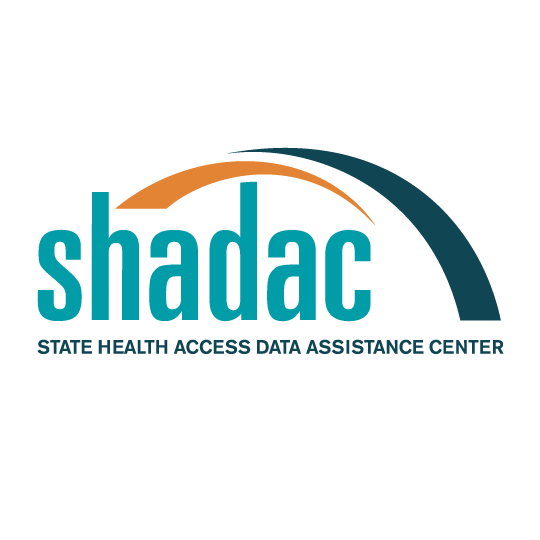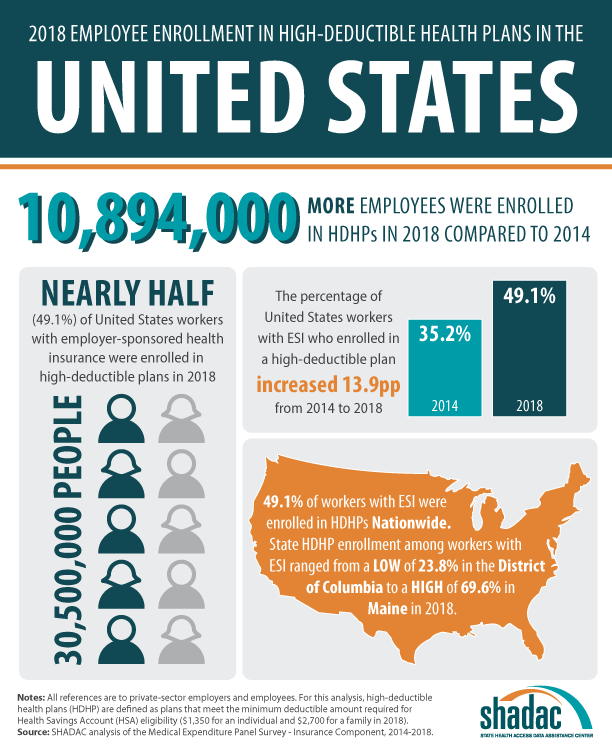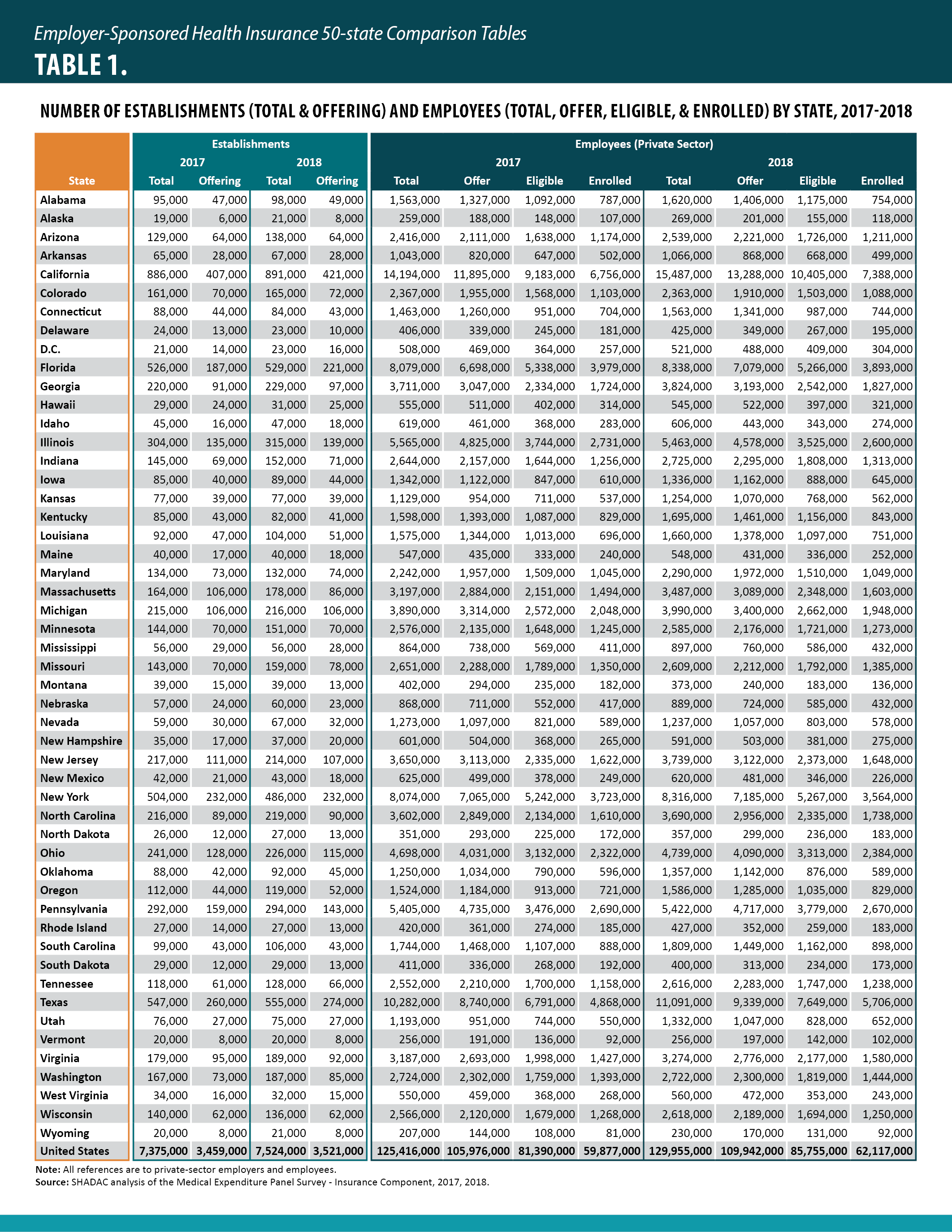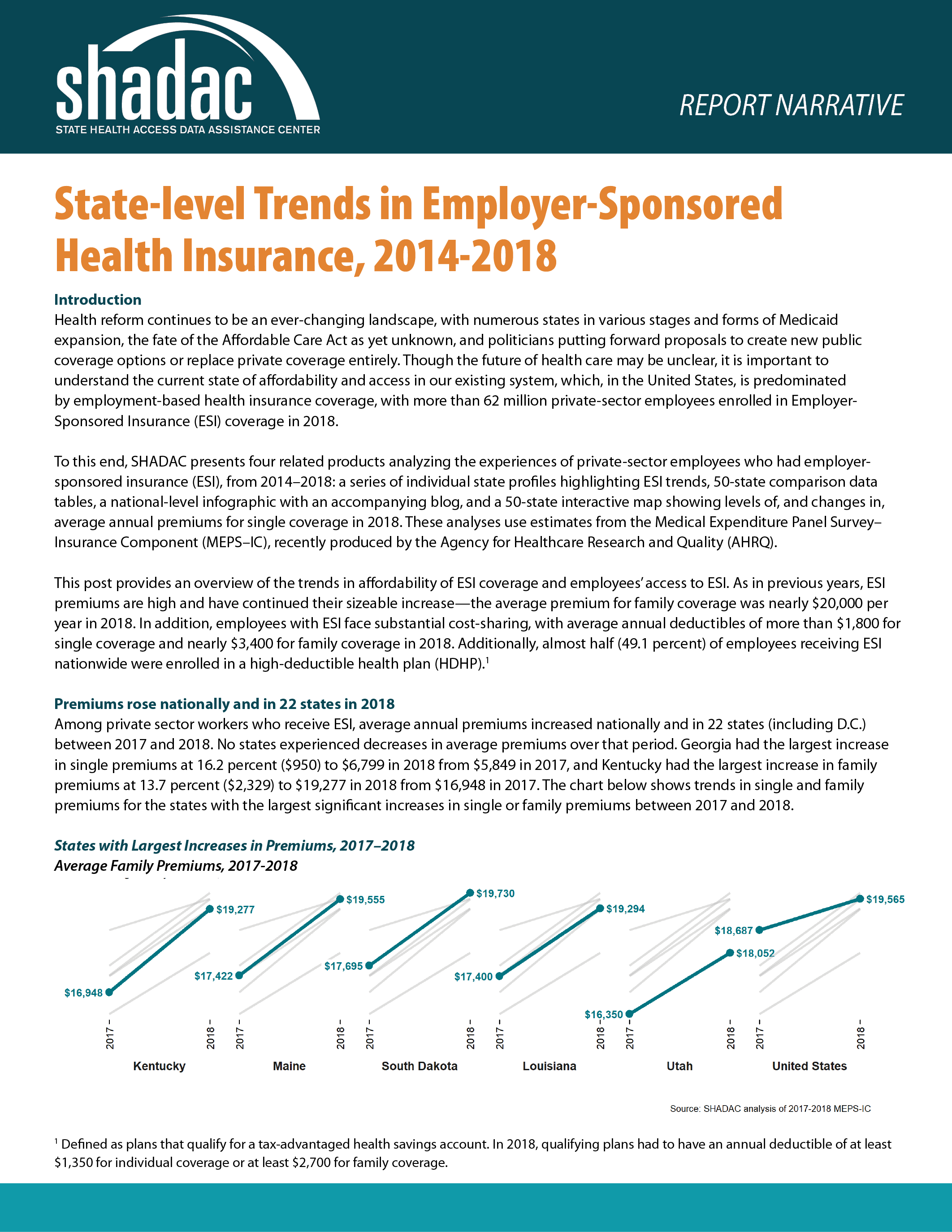Blog & News
Employer-Sponsored Insurance, 2014-2018: Premiums Reach New Heights while Deductibles Hold Steady (Infographics)
August 14, 2019:More than 62 million private sector workers in the United States received health insurance benefits from their employer in 2018, and, according to SHADAC researchers, paid higher-than-ever premiums for their health plans last year. Using data from the Medical Expenditure Panel Survey-Insurance Component (MEPS-IC), a new analysis from SHADAC highlights the experiences of private sector workers with employer-sponsored insurance (ESI) from 2014 through 2018 at the national level and within the states.
Key Findings
Coverage
- Nationwide, the percentage of employers offering health insurance coverage remained steady, from 46.9 percent in 2017 to 46.8 percent in 2018.
- Employee eligibility for employer-sponsored insurance held steady as well, with a slight increase to 78.0 in 2018 from 76.8 in 2017.
- The percent of eligible U.S. employees receiving health coverage through ESI fell slightly in 2018 to 72.4 percent from 73.5 percent in 2017.
Premiums
- The average annual single-coverage premium nationwide rose $347, or 5.4 percent, to $6,715 in 2018, the largest single-year increase to date in the last five years.
- Premium increases for single coverage were also seen in 18 states and the District of Columbia, and no state saw a significant decrease in single coverage premiums.
- In 2018, the average annual family-coverage premium nationwide rose $847 to $19,565—a 4.7 percent increase from 2017.
- Family premiums for ESI also increased in 11 states, with no significant state-level decreases seen.
Deductibles
- The average annual single-coverage deductible held steady nationwide at $1,846 in 2018.
- The national average annual family-coverage deductible in 2018 also remained statistically unchanged from 2017 at $3,392.
- Among the states, eight saw increases in average deductibles for single coverage and only one (Utah) saw a significant decrease.
- In 2018, almost half of private-sector employees nationwide who had ESI (49.1 percent) were enrolled in a high-deductible health plan (HDHP), a rate that was unchanged from 2017 but that is 13.9 percentage points higher than in 2014 (35.2 percent).[1]
The Takeaway
As the majority of the United States population continues to receive health insurance coverage from their employer, it is important to remember that trends in ESI data such as rising premiums and continuing high enrollment in HDHPs affect a significant number of people. And while the 2018 plateau in deductible growth is heartening, it is too soon to say whether this leveling-off is actually part of a larger trend or if it’s merely a singular data point, as SHADAC’s State Health Compare estimates show average deductibles for employer-sponsored insurance more than doubling nationwide over the past 10 years.
Explore the Analysis
The following products present detailed findings from this analysis:
Interactive Map: Hover over a state on the map below to view the average annual single-coverage premium in 2018, or click a state to view and download its individual fact sheet.
| No Change in Average Annual Single-Coverage Premium in 2018 |
Significant Increase in Average Annual Single-Coverage Premium in 2018 |
|---|
Significant change between 2017 and 2018 at the 95% confidence level.
For more detailed information on ESI findings from SHADAC, see the following products:
- Report narrative highlighting key findings on levels of, and trends in: average ESI premiums and deductibles as well as employee access to and take-up of ESI coverage
- Two-page state profiles on ESI trends
- 50-state comparison data tables
About the Data
This analysis uses data from the Medical Expenditure Panel Survey-Insurance Component (MEPS-IC).
Related Resources
Now Available on State Health Compare: New and Updated Data on Measures of Availability, Cost, and Enrollment for Employer-sponsored Insurance (ESI)
SHADAC Blog
Employer-Sponsored Health Insurance at the State Level, 2013-2017: Chartbook and State Fact Sheets
SHADAC Report
Employer-Sponsored Insurance, 2013-2017: Premiums Grow Faster, Deductibles Continue to Increase
SHADAC Blog
[1] For the purposes of this analysis, high-deductible health plans are defined as plans that meet the minimum deductible amount required for Health Savings Account (HSA) eligibility ($1,350 for an individual and $2,700 for a family in 2018). This includes employees enrolled in single- and family-coverage plans.













